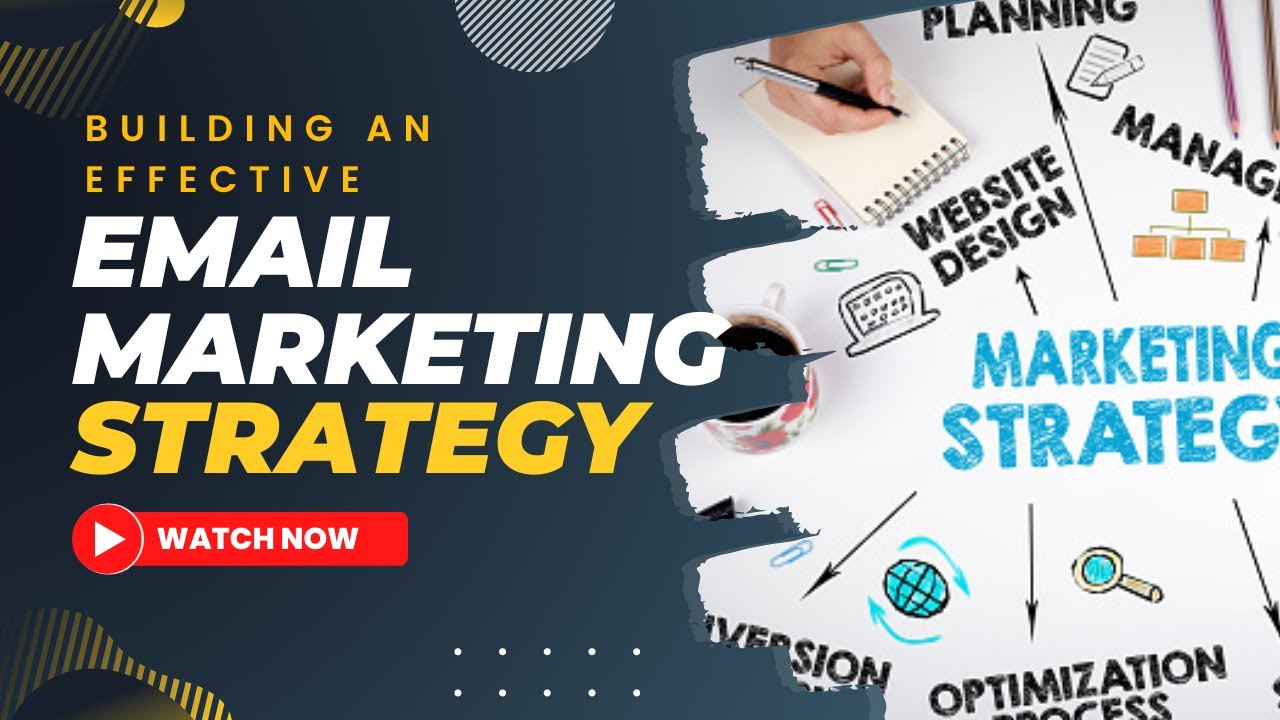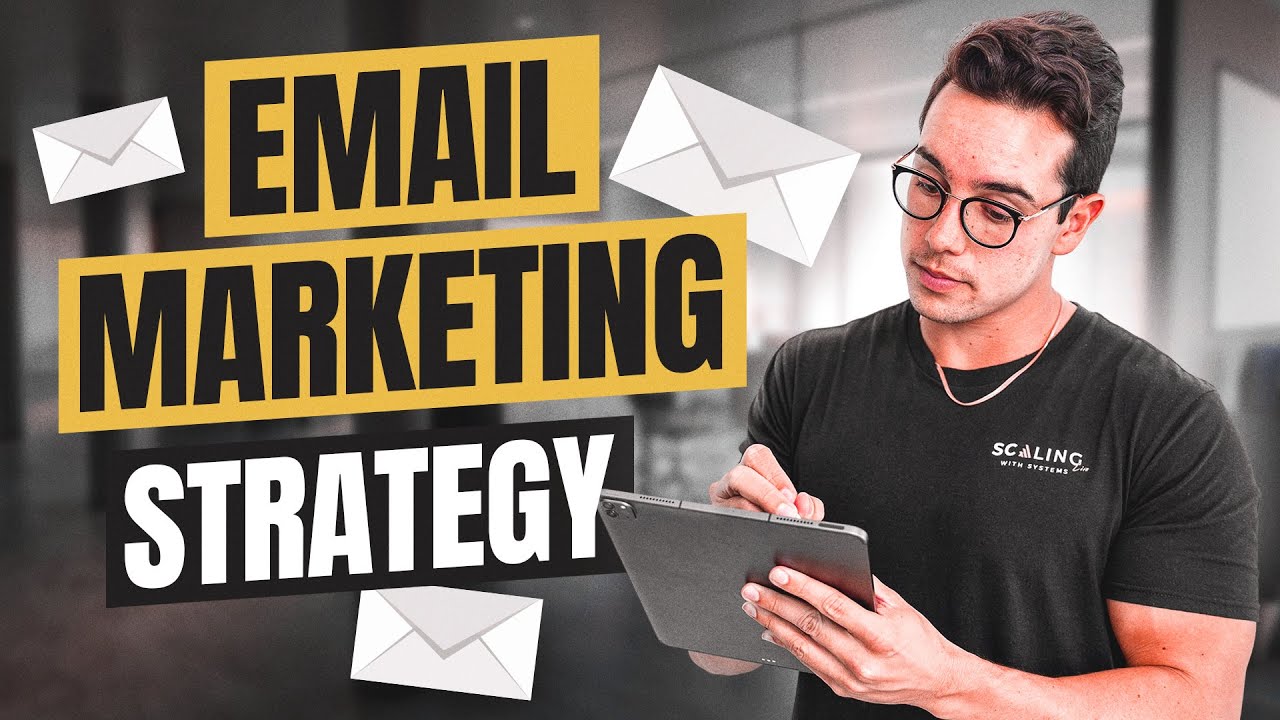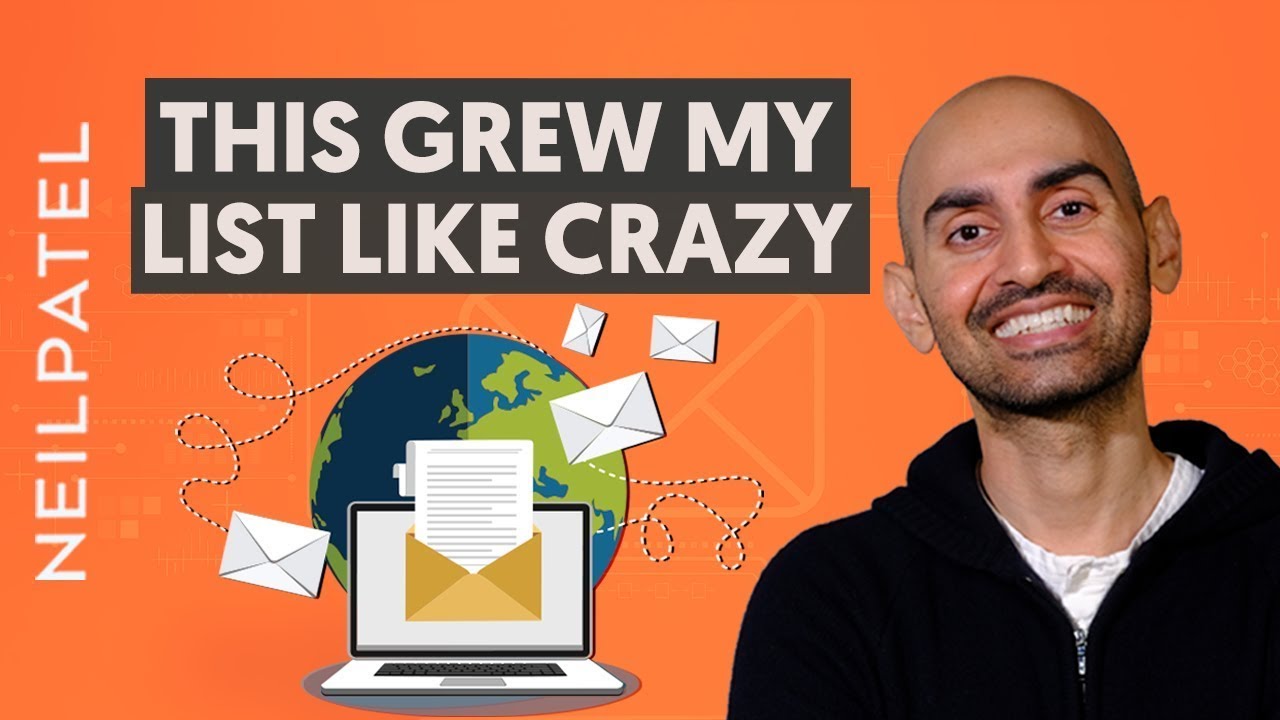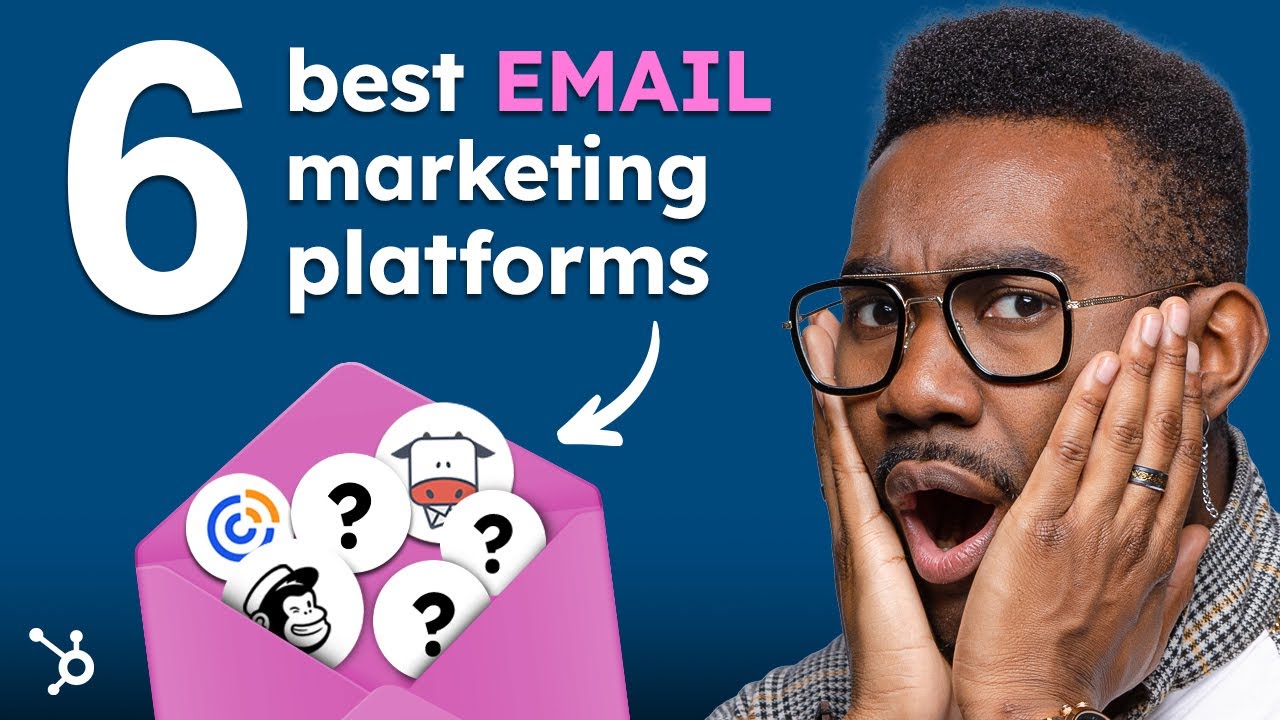In today's digital era, email marketinghas emerged as a powerful tool for small businesses to connect with their target audience, nurture relationships, and drive sales. With its cost-effectiveness, wide reach, and measurable results, email marketing has become an integral part of any successful marketing strategy. Let's delve into the world of email marketing for small businesses, providing valuable insights, tips, and strategies to help them maximize their success.
Why Email Marketing For Small Businesses Matters
Email marketing offers a multitude of benefits that make it a must-have strategy for small businesses. Here are some compelling reasons why email marketing matters:
- Cost-Effectiveness -Email marketing is a cost-effective solution for small businesses with limited marketing budgets. It requires minimal investment compared to traditional marketing channels like print or television advertising.
- Targeted Reach -With email marketing, you can segment your audience based on demographics, preferences, and behaviors. This enables you to send personalized messages tailored to specific customer segments, increasing engagement and conversions.
- Customer Relationship Building -Emails allow you to establish and nurture relationships with your customers. By delivering valuable content, personalized offers, and timely updates, you can build trust and loyalty among your audience.
- Increased Brand Awareness -Regularly sending emails to your subscribers keeps your brand in front of their eyes. This helps to reinforce your brand image, increase recognition, and encourage repeat business.
- Measurable Results -Email marketing provides valuable insights into campaign performance. You can track metrics such as open rates, click-through rates, and conversion rates, allowing you to refine and optimize your email campaigns for better results.
10 Key Steps For Building An Effective Email Marketing Strategy

Building an Effective Email Marketing Strategy | Earn Money Online by Email Marketing | Jamil Latif
To harness the power of email marketing, small businesses need to develop a well-defined strategy. Here are the key steps to building an effective email marketing strategy:
1. Set Clear Goals
Before embarking on your email marketing journey, define clear and measurable goals. Common goals include increasing sales, driving website traffic, boosting customer engagement, or promoting new products/services. Setting specific goals will help guide your strategy and measure success.
2. Define Your Target Audience
Understanding your target audience is crucial for creating relevant and engaging email content. Conduct market research and analyze customer data to identify their demographics, preferences, pain points, and interests. This information will help you tailor your messages to resonate with your audience.
3. Choose The Right Email Marketing Platform
Selecting the right email marketing platform is essential for small businesses. Look for platforms that offer user-friendly interfaces, automation capabilities, customization options, and robust analytics. Some popular email marketing tools for small businesses include Mailchimp, Constant Contact, and Sendinblue.
4. Build A Quality Subscriber List
Focus on growing a quality subscriber list of individuals genuinely interested in your business. Offer incentivessuch as exclusive discounts, valuable content, or free resources in exchange for subscribing to your email list. Implement sign-up forms on your website, social mediachannels, and blog posts to capture leads. Ensure that the opt-in process is transparent and complies with data protection regulations.
5. Plan Your Email Content Strategy
Develop a content strategythat aligns with your goals and resonates with your target audience. Plan a mix of promotional emails, informative newsletters, educational content, and engaging stories. Use compelling subject lines to grab attention, and focus on providing value to your subscribers in every email.
6. Design Engaging And Responsive Emails
Create visually appealing and mobile-responsive email templates that reflect your brand identity. Use a combination of captivating images, concise copy, and clear call-to-action buttons to encourage click-throughs and conversions. Remember to optimize your emails for different devices and email clients.
7. Automate Email Campaigns
Take advantage of automation features provided by your email marketing platform to streamline your campaigns. Set up automated welcome emails, drip campaigns, abandoned cart reminders, and personalized follow-ups based on customer actions and preferences. Automation saves time and ensures timely communication with your subscribers.
8. Personalize Your Emails
Segment your subscriber list based on various criteria such as demographics, purchase history, or engagement levels. This allows you to send targeted, personalized emails that resonate with each segment. Personalization leads to higher open rates, click-through rates, and conversions.
9. Test And Optimize
Regularly test different elements of your email campaigns to identify what works best for your audience. Conduct A/B tests for subject lines, email copy, images, and call-to-action buttons. Analyze the results and optimize your campaigns based on the insights gained.
10. Ensure Compliance With Email Regulations
Adhere to email marketing regulations, such as the General Data Protection Regulation (GDPR) and the CAN-SPAM Act. Obtain proper consent from subscribers, provide clear unsubscribe options, and include your business address in every email. Non-compliance can lead to legal consequences and damage your brand reputation.
8 Tips For Crafting Compelling Email Content

How to Craft the Perfect Email Marketing Strategy
The success of your email marketing campaigns depends on creating compelling and engaging content. Here are some tips for crafting effective email content:
1. Grab Attention With A Strong Subject Line
The subject line is the first impression you make on your subscribers. Craft concise, attention-grabbing subject lines that entice recipients to open your email. Use personalization, urgency, curiosity, or humor to make your subject lines stand out in crowded inboxes.
2. Write Engaging And Relevant Email Copy
Keep your email content concise, scannable, and easy to read. Use a conversational tone that resonates with your target audience. Focus on the benefits and value your products or services provide. Incorporate storytelling techniques to make your emails more engaging and memorable.
3. Include Clear Call-to-Action (CTA) Buttons
Every email should have a clear and compelling call-to-action (CTA) that directs subscribers to take the desired action. Use persuasive language and contrasting colors to make your CTA buttons visually appealing and easily clickable. Place them prominently within your email to increase click-through rates.
4. Use Visuals Strategically
Images and videos can enhance the visual appeal of your emails and increase engagement. Use relevant visuals that support your message and align with your brand. Optimize images for faster loading times and include alt text for accessibility purposes.
5. Personalize And Segment Your Content
Segment your subscriber list based on demographics, past purchases, or browsing behavior. Craft targeted emails that address specific customer interests or pain points. Personalize your emails by addressing subscribers by name and tailoring content based on their preferences or previous interactions with your business. Personalization creates a sense of relevance and increases the likelihood of conversion.
6. Provide Valuable And Educational Content
Don't solely focus on promotional content. Provide value to your subscribers by sharing informative and educational content related to your industry or niche. This positions your business as an authority and builds trust with your audience. Include tips, how-to guides, industry insights, and relevant resources.
7. Create A Sense Of Urgency
Incorporate urgency in your emails to encourage immediate action. Limited-time offers, exclusive discounts, or countdown timers create a sense of scarcity and drive conversions. Use persuasive language to convey the urgency and emphasize the benefits of taking action promptly.
8. Optimize For Mobile Devices
The majority of emails are now opened on mobile devices. Ensure that your email templates are mobile-responsive and display correctly across various screen sizes. Test your emails on different devices and email clients to ensure a seamless user experience.
7 Strategies For Growing And Engaging Your Subscriber List

How I grew my email subscriber list to 873,049 subscribers
A healthy and engaged subscriber list is essential for the success of your email marketing efforts. Here are some strategies to grow and engage your subscriber list:
1. Implement Opt-In Forms On Your Website
Place opt-in forms strategically on your website to capture visitor information. Create compelling calls-to-action that encourage visitors to subscribe. Offer incentives such as exclusive content, discounts, or free resources to entice them to join your email list.
2. Leverage Social Media
Promote your email newsletter or special offers on your social media platforms. Direct your social media followers to your website's opt-in forms or landing pages. Encourage social sharing of your emails to expand your reach and attract new subscribers.
3. Create Lead Magnets
Develop valuable lead magnets such as ebooks, whitepapers, or templates that address your target audience's pain points. Offer these resources as free downloads in exchange for email subscriptions. Ensure that the lead magnets are highly relevant and provide genuine value to your subscribers.
4. Run Contests Or Giveaways
Organize contests or giveaways where participants must subscribe to your email list to enter. Promote these campaigns through your website, social media channels, or partnerships with other businesses. Ensure that the prizes align with your target audience's interests to attract quality subscribers.
5. Encourage Forwarding And Sharing
Include social sharing buttons and a "Forward to a Friend" option in your emails. Encourage your existing subscribers to share your content with their networks. This organic sharing can help you reach a wider audience and gain new subscribers.
6. Offer Exclusive Benefits For Subscribers
Provide exclusive benefits and offers to your email subscribers. This could include early access to sales, VIP discounts, or special promotions. Make your subscribers feel valued and rewarded for their loyalty, encouraging them to stay engaged and active.
7. Personalize Subscriber Experiences
Segment your subscriber list based on preferences, purchase history, or engagement levels. Use this data to send targeted emails that cater to their specific interests. Personalization creates a personalized experience and increases subscriber engagement.
8 Strategies For Optimizing Email Campaigns For Conversions

Use Cases For Optimizing Email Campaign Conversions
Conversions are the ultimate goal of any email marketing campaign. Here are some strategies to optimize your email campaigns for conversions:
1. Perform A/B Testing
Conduct A/B testing to compare different elements of your emails and identify what resonates best with your audience. Test variables such as subject lines, email designs, CTAs, or content formats. Analyze the results and make data-driven decisions to improve your conversion rates.
2. Optimize Your CTAs
Your call-to-action (CTA) buttons play a crucial role in driving conversions. Make them visually appealing, use contrasting colors, and place them prominently within your email. Use persuasive language that compels subscribers to take action. Experiment with different wording, button styles, and placements to determine the most effective CTAs.
3. Create Urgency And Scarcity
Incorporate urgency and scarcity techniques in your emails to create a sense of FOMO (fear of missing out). Limited-time offers, exclusive deals, or countdown timers can motivate subscribers to act quickly. Clearly communicate the time sensitivity of your offers to drive conversions.
4. Optimize Email Timing And Frequency
Timing and frequency play a crucial role in email campaign success. Test different send times to identify when your subscribers are most likely to engage with your emails. Avoid overwhelming your subscribers with excessive emails, as it can lead to fatigue and higher unsubscribe rates. Strike a balance between staying top-of-mind and respecting their inbox.
5. Use Social Proof And Testimonials
Incorporate social proof elements such as customer testimonials, reviews, or case studiesin your emails. Highlight positive experiences and success stories to build trust and credibility. Social proof can influence subscribers' decision-making and increase conversions.
6. Implement Personalization And Dynamic Content
Take advantage of personalization features offered by your email marketing platform. Address subscribers by name and dynamically insert relevant content based on their preferences or past interactions. Personalized emails have higher engagement rates and are more likely to convert.
7. Optimize For Mobile Devices
Ensure your emails are optimized for mobile devices. Mobile-responsive designs, legible fonts, and well-placed CTAs are essential for a seamless mobile experience. Test your emails on different devices and email clients to ensure consistent rendering and usability.
8. Streamline The Conversion Process
Make the conversion process as frictionless as possible. If you're directing subscribers to a landing page or a specific product, ensure that the page is optimized for conversions. Minimize form fields, provide clear instructions, and eliminate any distractions that may hinder the conversion process.
10 Key Metrics For Measuring And Analyzing Email Marketing Performance

Use Cases For Optimizing Email Campaign Conversions
Measuring and analyzing the performance of your email marketing campaigns is vital to understanding what works and optimizing for better results. Here are key metrics to track:
1. Open Rates
Open rates indicate the percentage of recipients who opened your email. A high open rate suggests that your subject lines are compelling and capturing subscribers' attention. Test different subject lines to optimize your open rates.
2. Click-through Rates (CTRs)
CTR measures the percentage of recipients who clicked on a link or CTA within your email. It indicates the engagement and interest level of your subscribers. Analyze which links or CTAs perform best and refine your content accordingly.
3. Conversion Rates
Conversion rates measure the percentage of recipients who completed the desired action, such as making a purchase or filling out a form. Tracking conversion rates helps assess the effectiveness of your email campaigns in driving actual business outcomes.
4. Bounce Rates
Bounce rates indicate the percentage of emails that were undelivered. High bounce rates can result from invalid email addresses or technical issues. Regularly clean your email list to reduce bounce rates and maintain a healthy subscriber base.
5. Unsubscribe Rates
Unsubscribe rates show the percentage of subscribers who opted out of your email list. Monitor unsubscribe rates to identify trends or issues that may impact subscriber retention. Address any concerns or feedback promptly to minimize unsubscribes.
6. ROI And Revenue Attribution
Track the return on investment (ROI) of your email marketing efforts by measuring the revenue generated from your campaigns. Analyze the impact of specific campaigns or segments to understand the contribution of email marketing to your overall business revenue.
7. Heatmaps And User Behavior
Utilize heatmaps and user behavior tracking tools to gain insights into how subscribers interact with your emails. Heatmaps provide visual representations of click patterns and scrolling behavior, helping you optimize email layouts and CTAs for better engagement.
8. A/B Testing Results
Evaluate the results of your A/B tests to identify which variations perform better. Use the insights gained to refine your email content, design, and strategies for future campaigns.
9. Feedback And Surveys
Gather feedback from your subscribers through surveys or feedback forms. Ask about their preferences, interests, and satisfaction levels. Use this feedback to tailor your email content and improve the overall subscriber experience.
10. Email Deliverability
Monitor your email deliverability rates to ensure your emails reach the intended recipients' inboxes. Maintain a good sender reputation by following email best practices, authenticating your domain, and regularly cleaning your subscriber list.
Analyzing these metrics and data will help you identify areas for improvement, understand subscriber behavior, and make data-driven decisions to enhance the performance of your email marketing campaigns.
Top Email Marketing Tools For Small Businesses

Best Free Email Marketing Platforms (2024)
When it comes to email marketing, using the right tools can streamline your efforts and maximize results. Here are some top email marketing tools suitable for small businesses:
- Mailchimp -Mailchimp is a popular email marketing platform known for its user-friendly interface, automation capabilities, and robust features. It offers customizable email templates, advanced segmentation, A/B testing, and detailed analytics.
- Constant Contact -Constant Contact is a comprehensive email marketing tool that caters to small businesses. It provides a range of features such as customizable templates, list segmentation, autoresponders, and social media integration.
- Sendinblue - Sendinblue is an all-in-one marketing platform that offers email marketing, SMS marketing, and other marketing automation features. It provides intuitive email editors, audience segmentation, marketing automation workflows, and real-time reporting.
- GetResponse -GetResponse offers a user-friendly email marketing platform with features like autoresponders, A/B testing, landing page creation, and webinar hosting. It also provides advanced automation workflows and e-commerce integration.
- ConvertKit -ConvertKit is a popular email marketing tool designed for creators, bloggers, and small businesses. It offers features like customizable opt-in forms, automated email sequences, subscriber tagging, and visual automation builders.
Remember to evaluate each tool based on your specific needs, budget, and the scalability of your email marketing efforts. Consider factors such as ease of use, deliverability rates, customer support, and integrations with other business tools.
People Also Ask
How Often Should Small Businesses Send Emails To Their Subscribers?
The frequency of email campaigns depends on your business and audience. Aim for a consistent schedule without overwhelming subscribers. Consider factors such as your content availability, subscriber preferences, and the goals of your campaigns. Test different frequencies to find the right balance.
How Can Small Businesses Improve Their Email Open Rates?
To improve open rates, focus on crafting compelling subject lines that create curiosity or offer value. Personalize subject lines when possible and A/B test different variations. Segmenting your audience and sending targeted, relevant content can also increase open rates.
What Is The Best Way To Grow An Email Subscriber List For A Small Business?
Implement opt-in forms on your website, create lead magnets to entice subscriptions, promote your email list on social media, and run contests or giveaways that require email sign-ups. Focus on providing value and incentives for subscribers to join your list.
Conclusion
In conclusion, email marketing for small businesses is a powerful tool that can significantly impact their success in the digital era. With its cost-effectiveness, targeted reach, and measurable results, email marketing offers an efficient way to connect with customers, nurture relationships, and drive conversions.